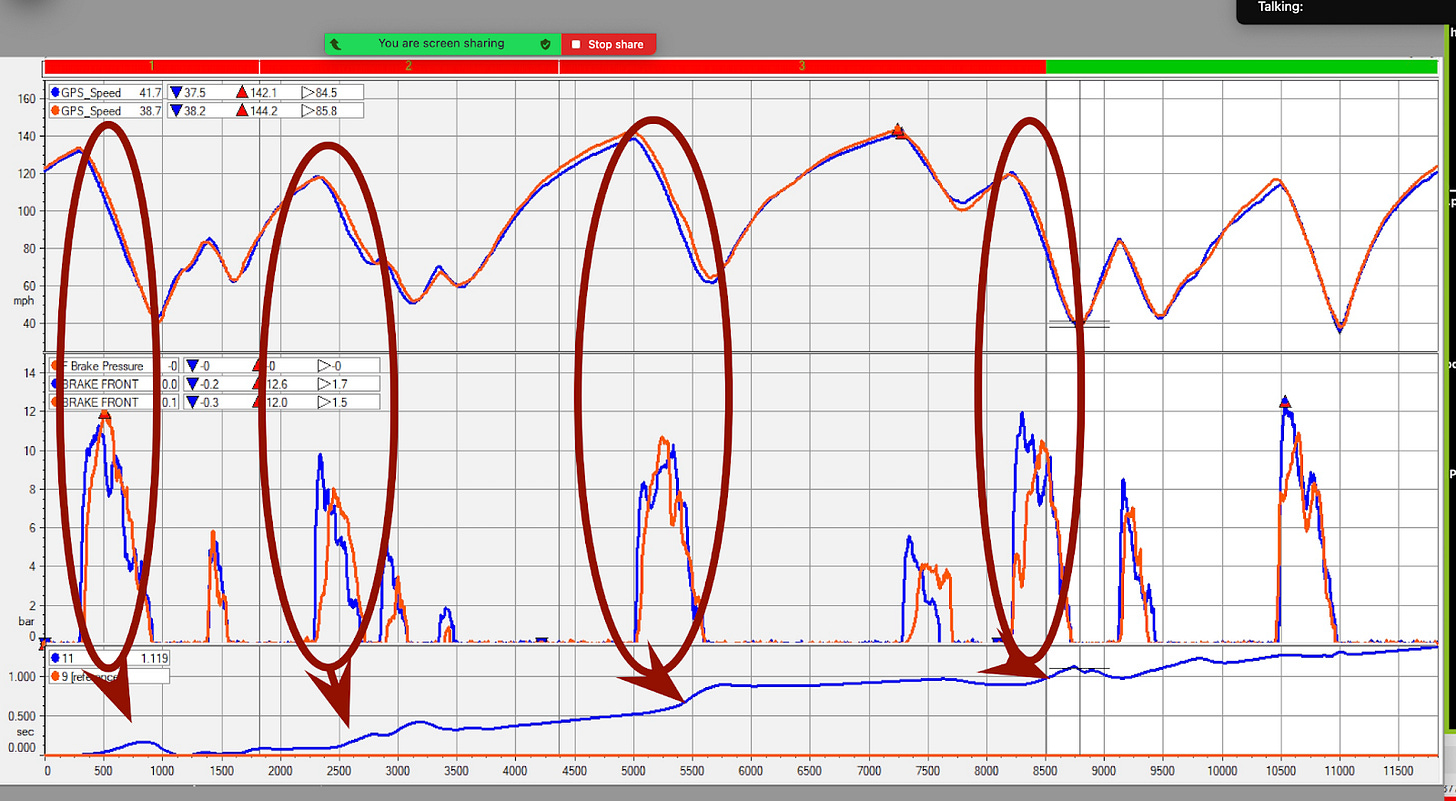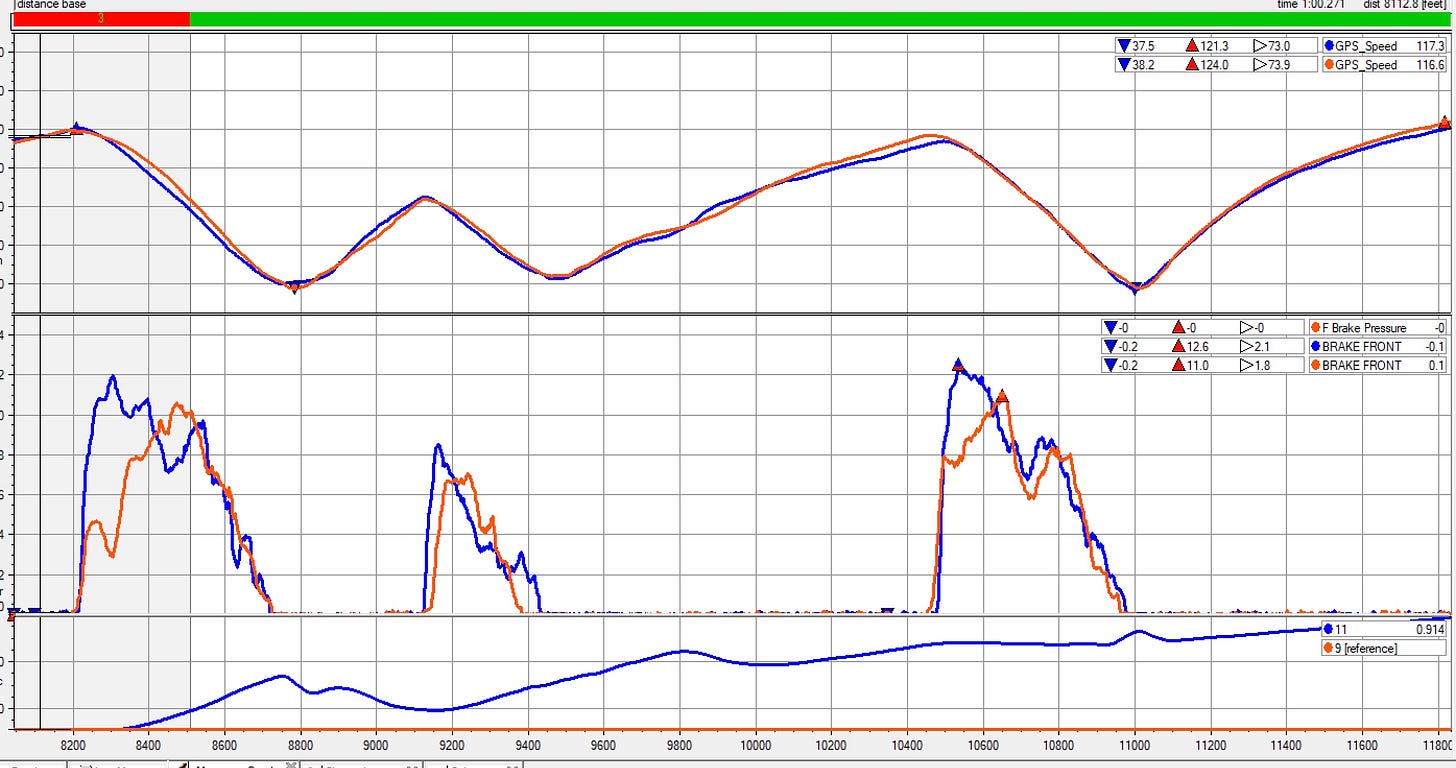[DATA] IS BRAKING HARDER AND LATER FASTER?
It's easy to assume that braking harder and later is key for a faster lap time. But is it? Where is the crossover between braking harder and later that actually makes you slower?
There will come a point in your racing career when you realize there is time to be made up in the braking zone. Other drivers or riders are braking later than you are, from higher speeds, and their lap times are quicker than what you are able to lay down on a consistent basis. So, your goal should be to brake as hard and as late as possible, right?
Not so fast. First, let’s back up and be clear about where the best lap times come from: getting into and out of corners in the least amount of time. Simply thinking that braking harder and later will help you achieve your ultimate lap time misses the full picture and can set you up for corner-entry frustration.
Braking later and harder can actually make your lap times worse. Here’s why: It’s all about time. If you brake too hard and slow down too quickly, you can take longer to reach the slow point of the corner than is optimal. That’s why thinking about corners in terms of time changes how you read them and set up your technique.
Let’s look at a few data graphs, as well as a video, where I go into greater detail on this subject.
Context: These AIM data graphs compare two professional MotoAmerica riders on the same bike, the same track, and the same day. The reference lap (RED) is less than two seconds off the overall class lap record, while the lap being analyzed (BLUE) belongs to a rider who, while very quick, feels at their limit.
The BLUE rider believes they can’t brake any harder or accelerate any better, yet they know they are off the pace of the frontrunners and they don’t understand how to go faster. The top channel is GPS speed, the middle is brake pressure, and the bottom is the lap-time delta, plus or minus in time.
Data graph #1
The BLUE rider is clearly losing time on entries (highlighted). Every time they touch the brake, they apply too much pressure, too quickly, which sheds more speed is than necessary and ultimately increases the time to get to the slow point of the corner. As a result, the BLUE rider loses from 0.2 to 0.4 seconds to the RED rider every time they touch the brake.
Data Graph #2
This is the same lap, focusing on the three corners where significant time is being lost.
Conclusion:
Harder and later braking should naturally develop as your lap times drop—it’s inevitable. Prioritizing braking harder or later, however, over the fundamental goal—reaching the slow point in the shortest time possible—misses the mark. The true key to proper braking application for each corner is minimizing the time needed to get to the slow point.
In this video, I cover the differences between braking harder and later, versus the mindset of getting to the slow point of the corner in less time, by looking at the data generated by two professional motorcycle racers.
About Ken Hill
Ken Hill is considered the top motorcycle riding coach in the U.S. He bought his first motorcycle at age 30 and began road racing the very same year. Despite the late start, Ken went on to set track records and win class championships before making his professional debut in the AMA Superbike class, where he finished in the top 10 at age 41. Ken’s passion for learning and, ultimately, bettering the sport, led him to retire from racing in 2007 and devote himself full-time to coaching. Learn more at khcoaching.com.




I knew this was true, but never had it explained in a way where I could see it in the data. Thanks.
This data breakdown is very helpful to understand the topic more thoroughly. Thx!